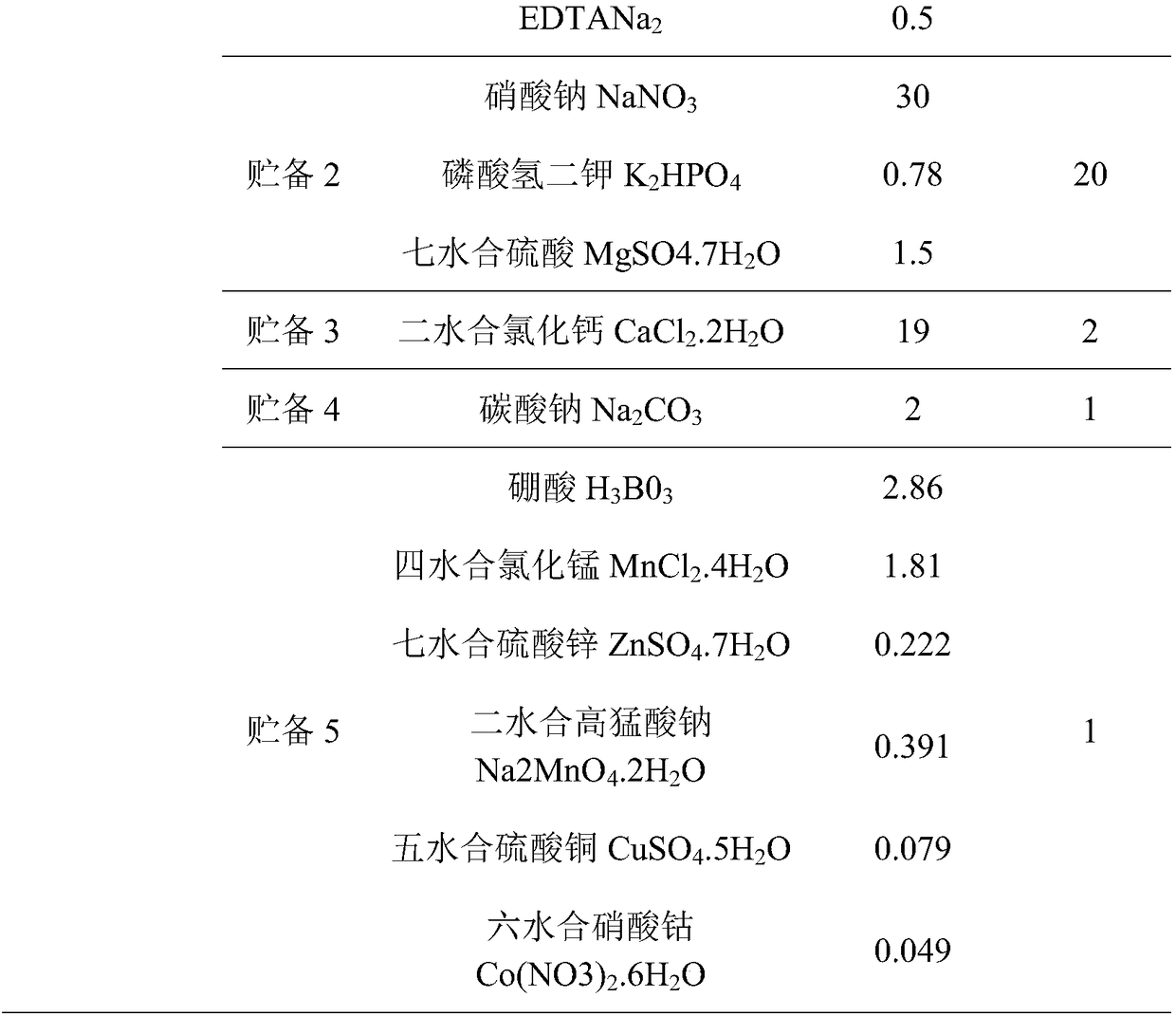Monitoring and identifying evaluation method for group biotoxicity in printing and dyeing wastewater
A technology for printing and dyeing wastewater and biotoxicity, which is used in chemiluminescence/bioluminescence, color/spectral property measurement, and testing water, etc. Effect
- Summary
- Abstract
- Description
- Claims
- Application Information
AI Technical Summary
Problems solved by technology
Method used
Image
Examples
Embodiment 1
[0044] (1) Photobacteria, zebrafish larvae, zebrafish embryos and chlorella were used as the test organisms.
[0045] (2) Make a group biological toxicity test with four kinds of organisms as subjects.
[0046](3) Preparation of bacterial suspension: freeze-dried powder of Photobacterium brighten stored at 4°C was revived in 1mL 2.5% NaCl solution stored at 4°C for 3 minutes, and the bacteria immediately glowed, and then added 9mL of 3% NaCl stored at 4°C When the NaCl solution arrives, shake it at a constant temperature of 20°C for 20 minutes after mixing, make a bacterial suspension with the required concentration with 3% NaCl, and measure the initial luminescence intensity with a microplate multifunctional detector.
[0047] (4) The maximum absorption peak and the initial inoculation concentration of Chlorella: the maximum absorption wavelength of the algae liquid is 685nm, and the initial inoculation absorbance of the algae liquid is 0.06.
[0048] (5) Exposure to test or...
Embodiment 2
[0065] (1) Photobacteria, zebrafish larvae, zebrafish embryos and chlorella were used as test organisms.
[0066] (2) Make a group biological toxicity test with four kinds of organisms as subjects.
[0067] (3) Preparation of bacterial suspension: freeze-dried powder of Photobacteria brightens stored at 4°C was revived in 1mL 2.5% NaCl solution stored at 4°C for 3 minutes, the bacteria immediately glowed, and added to 9mL of 4.5% NaCl stored at 4°C When the NaCl solution arrives, shake it at a constant temperature of 20°C for 20 minutes after mixing, make a bacterial suspension with the required concentration with 3% NaCl, and measure the initial luminescence intensity with a microplate multifunctional detector.
[0068] (4) The maximum absorption peak and the initial inoculation concentration of Chlorella: the maximum absorption wavelength of the algae liquid is 685nm, and the initial inoculation absorbance of the algae liquid is 0.065.
[0069] (5) Exposure to test organism...
Embodiment 3
[0086] (1) Photobacteria, zebrafish larvae, zebrafish embryos and chlorella were used as test organisms.
[0087] (2) Make a group biological toxicity test with four kinds of organisms as subjects.
[0088] (3) Preparation of bacterial suspension: freeze-dried powder of Photobacterium luminosus preserved at 4°C was recovered in 1mL of 2.5% NaCl solution preserved at 4°C for 3 minutes, and the bacteria immediately glowed, and then added to 9mL of 5% NaCl preserved at 4°C When the NaCl solution arrives, shake it at a constant temperature of 20°C for 20 minutes after mixing, make a bacterial suspension with the required concentration with 3% NaCl, and measure the initial luminescence intensity with a microplate multifunctional detector.
[0089] (4) The maximum absorption peak and the initial inoculation concentration of Chlorella: the maximum absorption wavelength of the algae liquid is 685nm, and the initial inoculation absorbance of the algae liquid is 0.07.
[0090] (5) Expo...
PUM
| Property | Measurement | Unit |
|---|---|---|
| absorption wavelength | aaaaa | aaaaa |
| absorbance | aaaaa | aaaaa |
Abstract
Description
Claims
Application Information
 Login to View More
Login to View More - R&D
- Intellectual Property
- Life Sciences
- Materials
- Tech Scout
- Unparalleled Data Quality
- Higher Quality Content
- 60% Fewer Hallucinations
Browse by: Latest US Patents, China's latest patents, Technical Efficacy Thesaurus, Application Domain, Technology Topic, Popular Technical Reports.
© 2025 PatSnap. All rights reserved.Legal|Privacy policy|Modern Slavery Act Transparency Statement|Sitemap|About US| Contact US: help@patsnap.com



